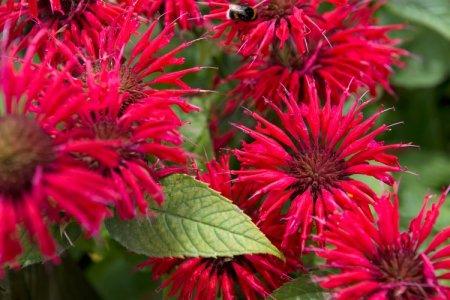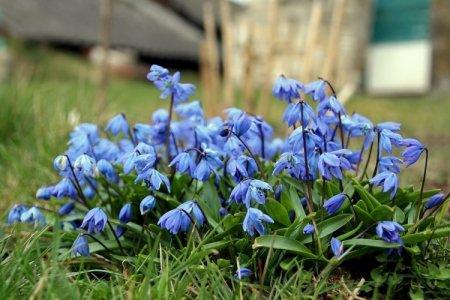
It happens that you grow chamomile in the garden, but it turns out that this is not a chamomile, but a real daisy! It's funny that its original, but such a complex name "leucanthemum" translates literally as "white flower". We will tell you how it differs and why it attracts gardeners so much!
general information
Nivyanik is indeed often called garden chamomile, which is why confusion arises. It belongs to the Asteraceae family, but not so long ago it was ranked among the chrysanthemums. On the site, the nivyanik is good not only for its beauty, but also for how harmoniously it combines with almost any other plants.
Nivyanik is annual and perennial. The height of the shoots varies from 30 cm to 1 m, so you can find a variety even for complex design ideas. It has elongated and unremarkable jagged leaves, against which large inflorescences look even more impressive.
The diameter of the cornflower baskets easily reaches 12 cm. Delicate snow-white petals diverge from the yellow volumetric center. In addition to simple varieties, there are also terry ones, and their inflorescences look like an amazing snow globe. Some species even bloom twice a season.

Nivyanik species
Among dozens of natural varieties of daisy, we have selected some of the best options for gardeners. In particular, taking into account the climatic features of the middle lane!
Common Nivyanik
It seems to be resistant to everything - to drought, to shade, to a lack of stable care. The height of the shoots is about 60-80 cm, and the diameter of the inflorescences is up to 8 cm. There are dwarf and taller varieties, but the absolute majority of them have simple chamomile flowers.

Swamp sycamore
It is also called the marsh chrysanthemum, it came to us, oddly enough, from hot Southern Europe. This is a compact species with the same compact inflorescences up to 3 cm in diameter. But at the same time, there are a lot of flowers, and new ones appear from the first half of summer until the first frost.

Magnificent Nivyanik
It is so decorative that it is most often grown for cutting. Technically, this is a hybrid in which all the stars converged: strong straight stems, large long leaves, spectacular voluminous inflorescences and even increased resistance to frost.

Kuril Nivyanik
He is Japanese, and the origin is obvious. This is another dwarf species up to only 20 cm high. The Kuril sycamore grows among rocks, on embankments and even on sand. He has a very powerful fleshy rhizome, which helps to store nutrients.

Greatest Nivyanik
A medium-sized perennial with a height of about 70 cm boasts simply huge baskets - 12 cm each and even more. Pay attention to complex and double inflorescences. The largest daisy blooms in waves until autumn.

Nivyan care
Nivyanik is completely unpretentious and willingly grows over large areas. So you will have to control its rapid growth more than somehow additionally stimulate it.
Temperature and lighting
Nivyanik prefers warmth and bright sunlight. Seedlings are kept and germinated at least at +22 degrees, and only then the temperature is gradually lowered to +19. If there is not enough light, the stems begin to stretch and deform, and the number of flowers decreases.

Watering
Nivyanik does not tolerate stagnant water, but at the same time loves regular watering. It is important to control the condition of the soil, because even with a short-term drought, the leaves wither almost instantly. We advise you to mulch the soil with something like sawdust to regulate moisture and protect against weeds.

The soil
The cornflower does not tolerate too dry and too wet soils, so a golden mean is needed. Clay, sandy and acidic soils are also not suitable. Before planting, be sure to dig up the area with peat and compost.

Fertilizers and feeding
The cornflower is fed 1-2 times a month, first with nitrogen, and then with phosphates. You can not use fertilizers that increase the acidity of the soil. But you can safely alternate organic matter and mineral complexes.

Pruning
To stimulate re-flowering, prune away wilting buds. And at the end of the season, the cornflower is cut off radically - to the basal leaves. After that, mulch the planting with peat.

Wintering
Nivyanik is a frost-resistant plant, so it does not need special preparation for winter. We recommend covering only decorative large-flowered and terry varieties with leaves or spruce branches. The height of the protective layer is about 15 cm.

Planting and breeding
At the end of autumn or in mid-spring, the seeds of the daisy are sown directly into the ground in small holes with a step of 20 cm. In a couple of weeks, seedlings will appear, and the plant will gain strength for the next year. And only in the second season, the nivyanik will bloom.
But with the help of seedlings, you can achieve flowering immediately. Seedlings are sown in February and kept under a film for 2-3 weeks. By the third full-fledged leaf, seedlings can be planted in peat pots, and in mid-May they can be planted outside.
In summer, the daisy reproduces well by cuttings from the basal processes. Choose the strongest of them with your leaf rosette, carefully cut with a part of the root and transplant. Adult bushes can be simply divided into parts - for the purpose of rejuvenation, restoration of decorativeness and control of planting.

Pest and disease control
During prolonged rains, the daisy suffers from almost all possible and impossible types of fungus. These are powdery mildew, spotting, rust and much more. But if you find a problem in time and immediately treat the planting with fungicides, not a trace of disease will remain.
Nivyanik was also not very lucky with pests. It is loved by pennies, miners and thrips, and all of them are difficult to eradicate. We advise you to immediately use chemical insecticides, and for prevention, periodically spray the seedlings with infusion of marigolds or celandine.

Nivyanik - photo
Do you like a carpet of delicate snow-white flowers all over your lawn? Then the Nivyanik is a plant especially for you!




























